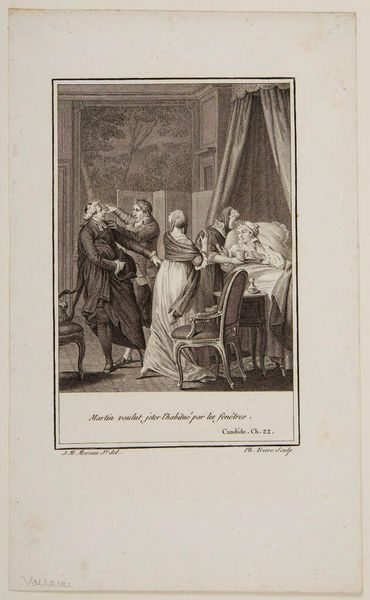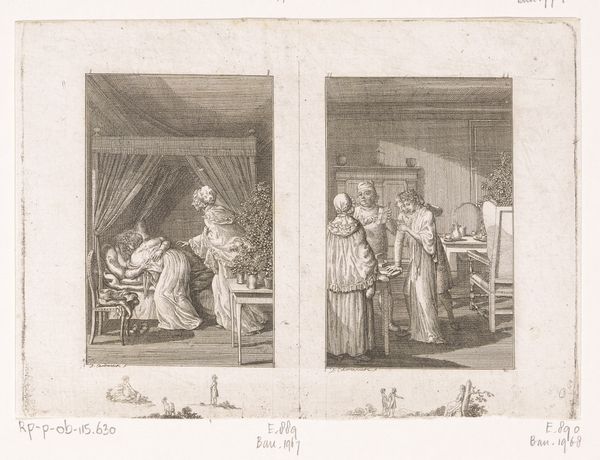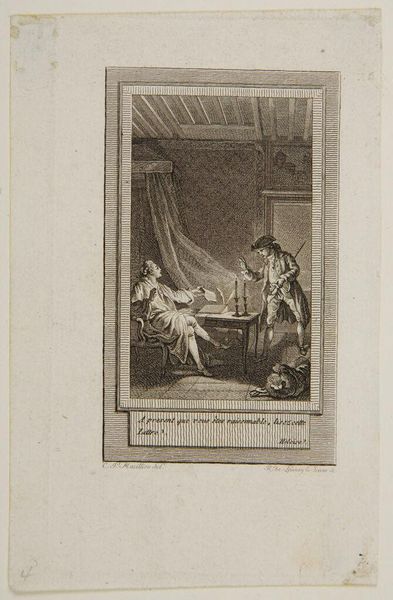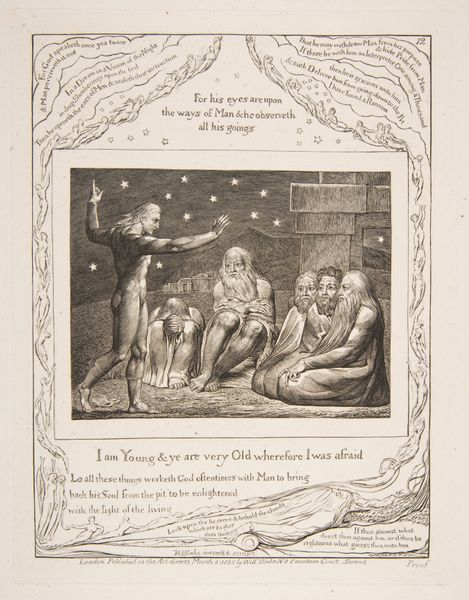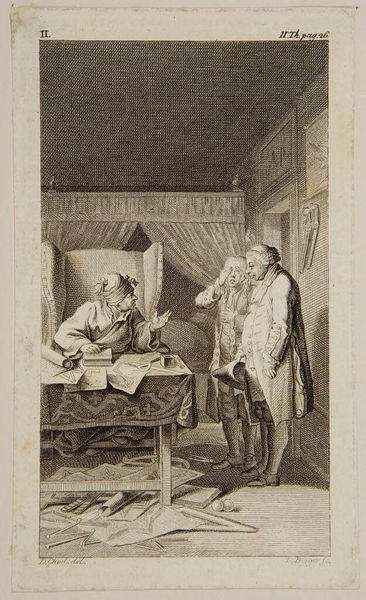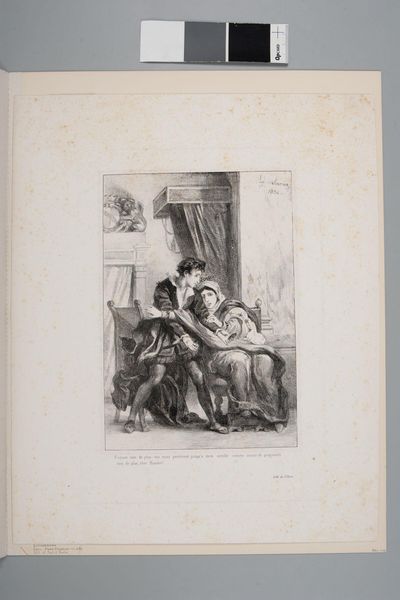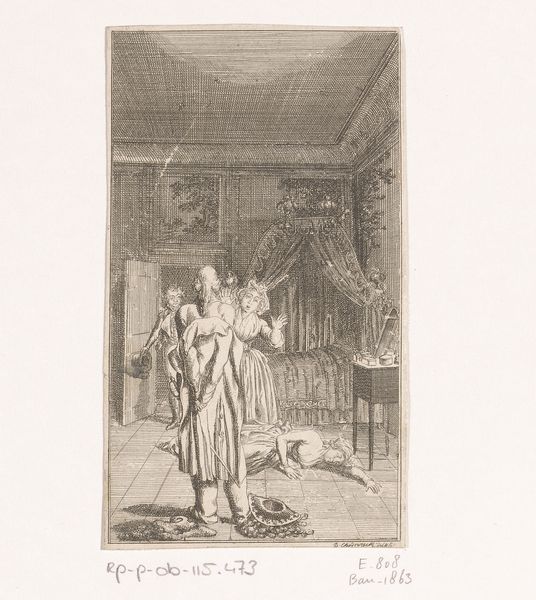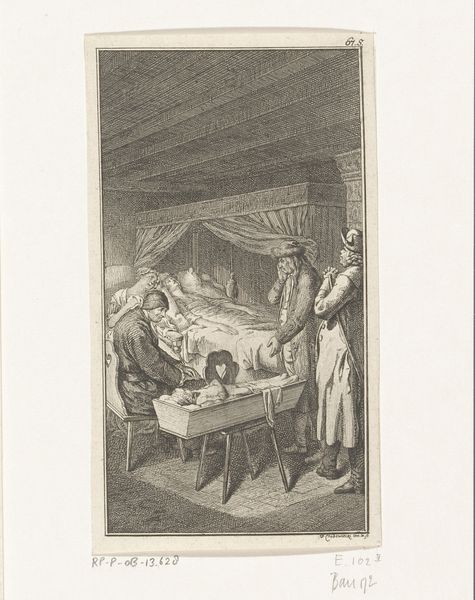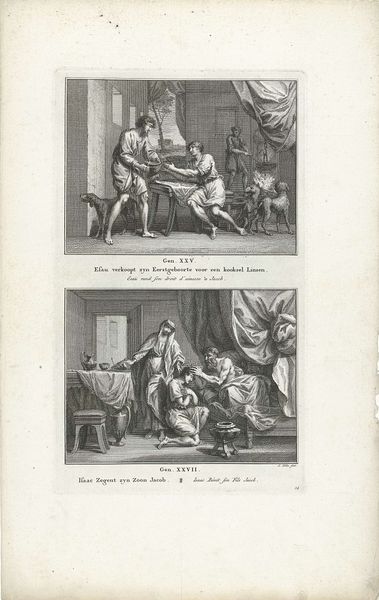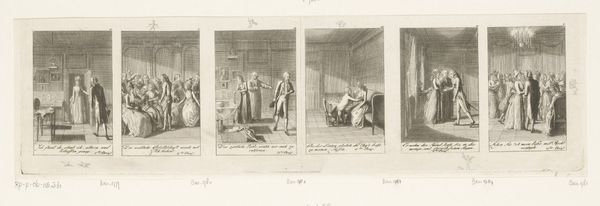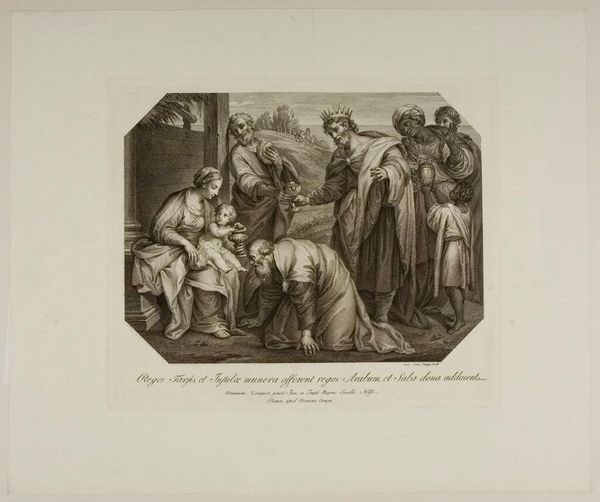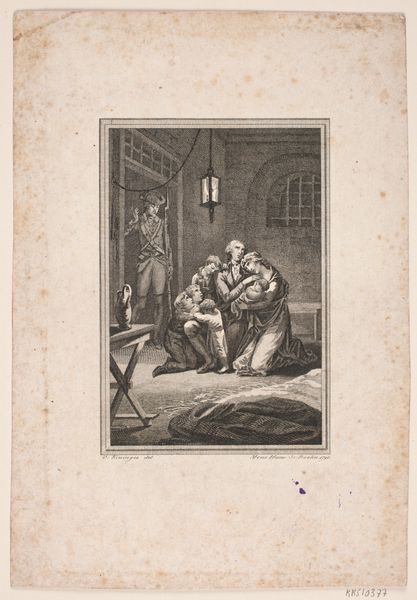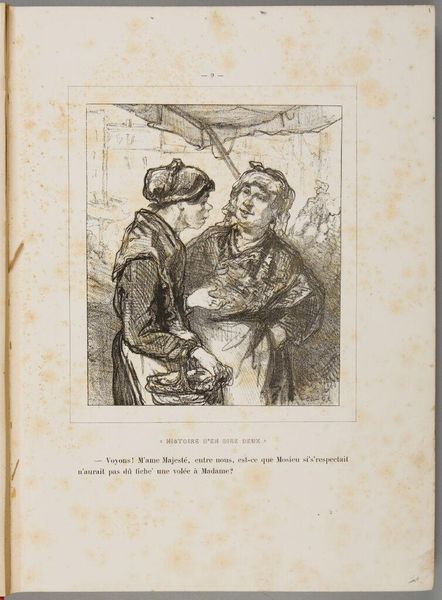
Illustration til St. St. Blicher: "Mowns". Snedkeren ved kisten; f.o.t.h.: bruden smykkes; f.n.t.v.: træ og sommerfugl 1886
0:00
0:00
drawing, print, pencil, graphite, charcoal
#
portrait
#
drawing
# print
#
landscape
#
charcoal drawing
#
figuration
#
pencil
#
graphite
#
genre-painting
#
charcoal
#
northern-renaissance
#
charcoal
#
graphite
#
pencil art
#
realism
Dimensions: 326 mm (height) x 279 mm (width) (bladmaal)
Curator: This print by Hans Smidth is called "Illustration til St. St. Blicher: 'Mowns'." It dates to 1886 and you can find it here at the SMK, Statens Museum for Kunst. Editor: It strikes me as a study in contrasts. The somber interiors versus the fragile, delicate nature study below. It feels... weighted. Curator: Exactly! Smidth created this as an illustration for a story by Steen Steensen Blicher, exploring themes of death and tradition in rural Denmark. Look at the top two panels. On the left, we see a carpenter next to a coffin, on the right a bride is being dressed. Editor: I am really drawn to the subtle class commentary, where patriarchal roles and obligations feel like they are pressing down on the figures. The carpenter seems burdened, almost trapped, and the women assisting the bride are rendered with this… sense of confinement. Curator: Smidth definitely captures a certain tension in the communal experience of both grief and celebration. It's also a sharp social observation. He shows us a kind of duality. Life alongside death, tradition binding them. And then at the bottom, like a breath of fresh air, a botanical study of a small tree or shrub with a butterfly perched upon it. Editor: It almost feels like a symbol of hope amidst the rather bleak realities depicted above. That little splash of naturalism feels revolutionary. Is the butterfly on a grave? What is the juxtaposition meant to provoke? Curator: Blicher's stories often explored similar themes, rooted in realism but punctuated by moments of beauty or fleeting joy. I feel Smidth successfully visualizes that duality. I wonder about the inclusion of text that’s illegible. Editor: It serves as another layer—perhaps as a sort of palimpsest reminding us of history and stories beneath the surface. This piece isn't just illustrating a narrative, but layered commentaries, critiques of social conventions, the role of women. I'm impressed by how much narrative is condensed into this deceptively simple form. Curator: It is compelling in its simplicity, wouldn’t you agree? A tiny story about stories themselves.
Comments
No comments
Be the first to comment and join the conversation on the ultimate creative platform.
